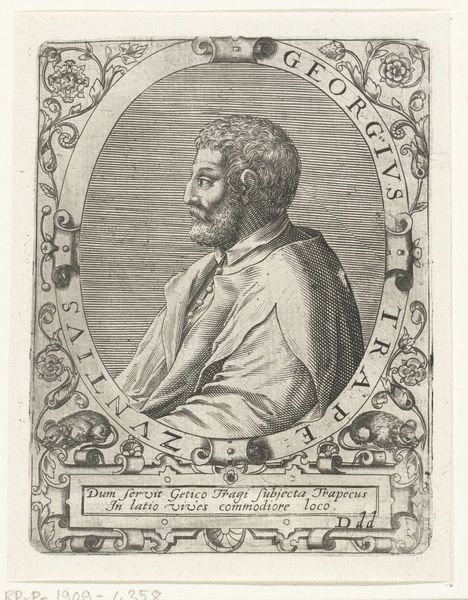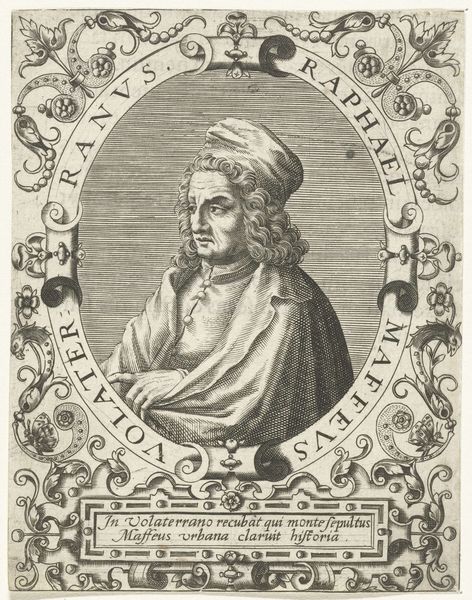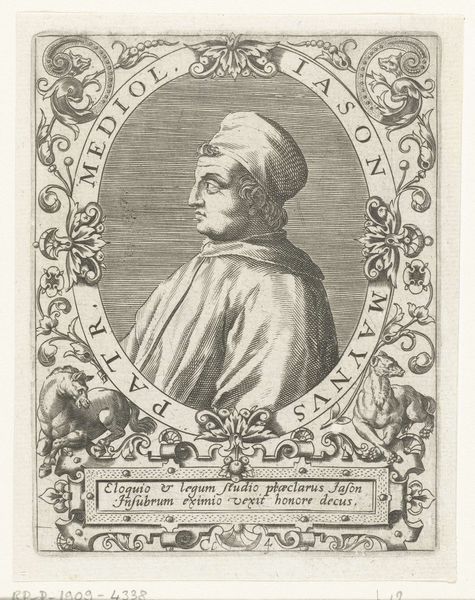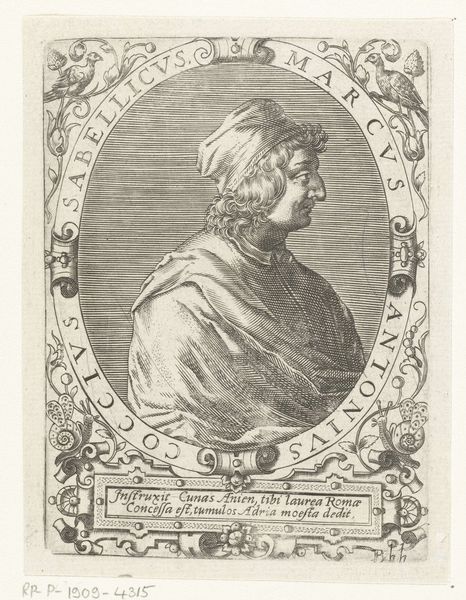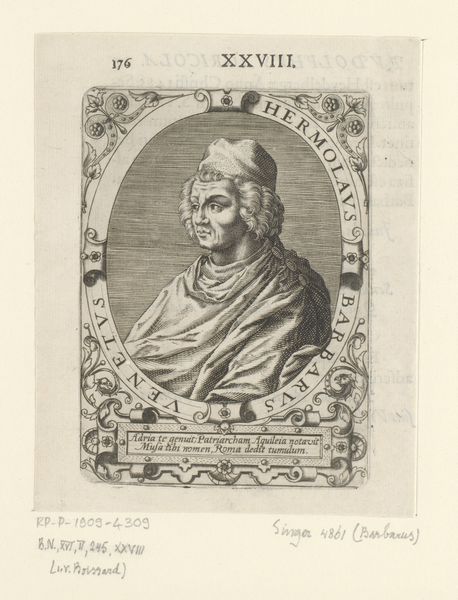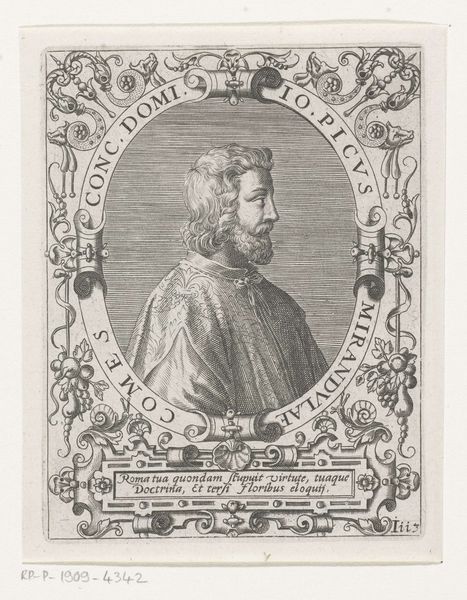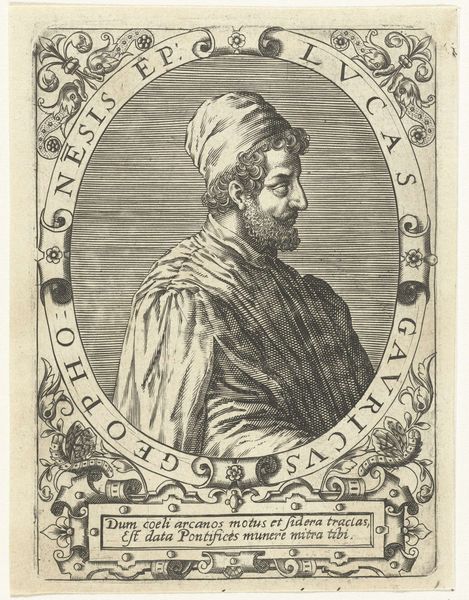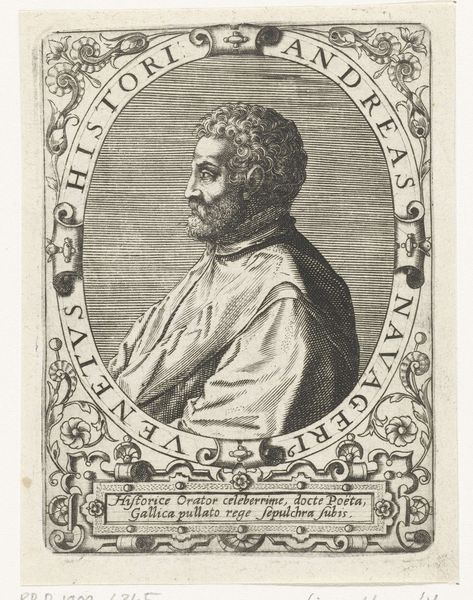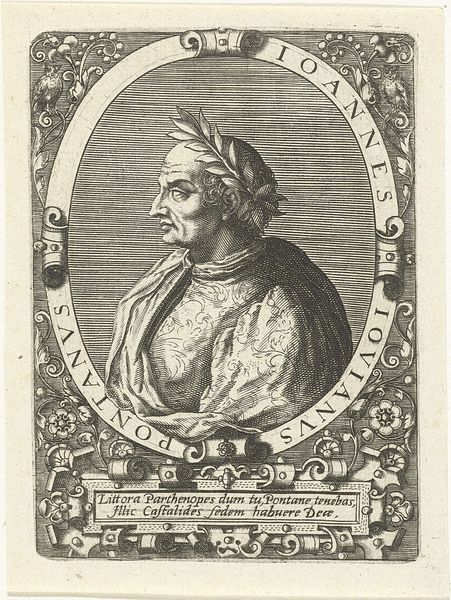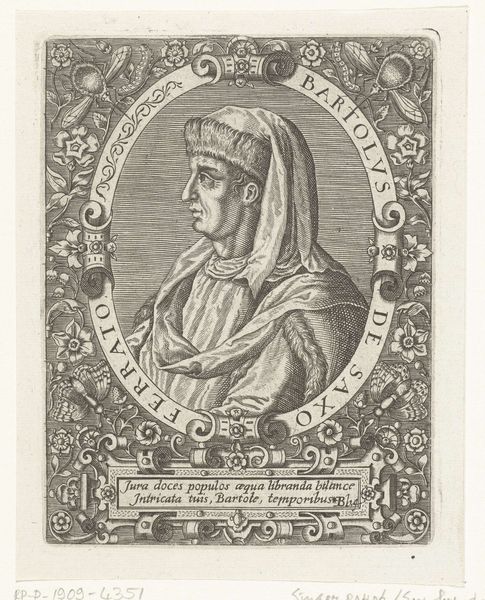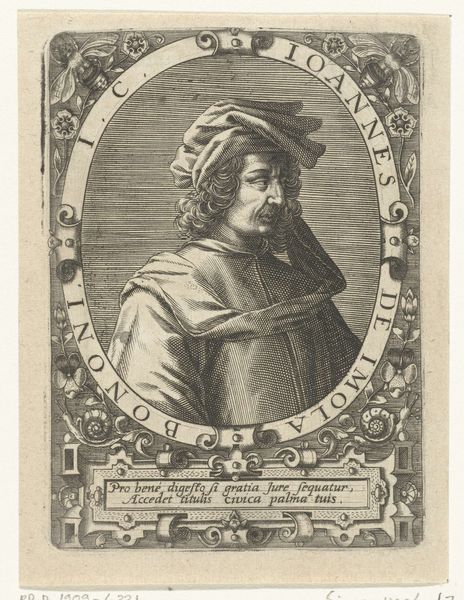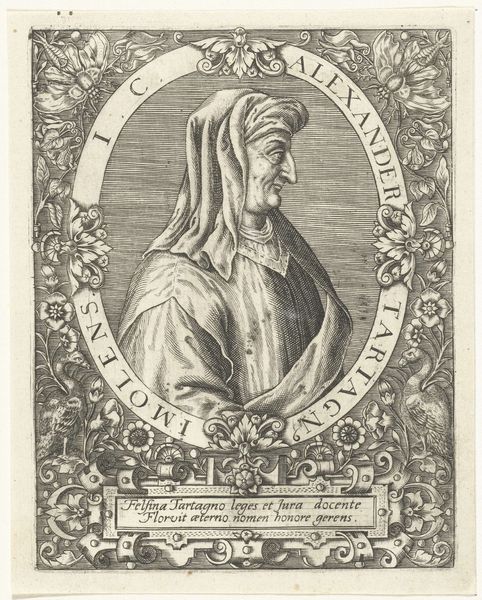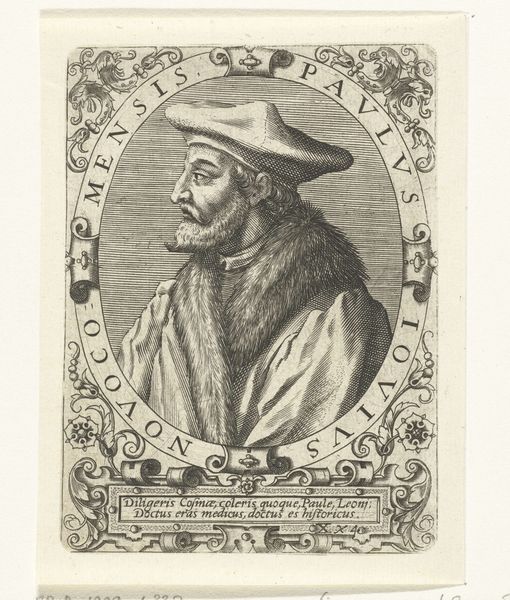
print, engraving
#
portrait
# print
#
old engraving style
#
caricature
#
figuration
#
northern-renaissance
#
engraving
Dimensions: height 140 mm, width 100 mm
Copyright: Rijks Museum: Open Domain
Curator: Let's turn our attention now to "Portret van Marsilio Ficino," an engraving housed here at the Rijksmuseum, made sometime between 1597 and 1669, attributed to Theodor de Bry. It immediately strikes me as rather studious. Editor: The engraving itself is incredibly detailed. You can see the textures of the clothing, even feel the weight of the paper almost, due to how expertly the material is treated, translated really, from life to ink. Was this for wide distribution? Curator: Most likely, yes. Engravings served precisely this purpose: disseminating images and ideas more broadly during that era. The formal composition, an oval portrait bust framed by ornate foliage, speaks to a Northern Renaissance aesthetic—highly ordered and symbolic. Note how the inscription hails Ficino as a “vigilant interpreter” of Plato, directly referencing his philosophical significance. Editor: Absolutely. And speaking of materials, consider the engraver's labor—the deliberate cuts into the metal, the repeated pressings. This wasn't a quick sketch. It speaks to a calculated act of making and dissemination, a process in dialogue with early publishing and, I'd argue, forms of labor that often get overlooked in studies of the period. I'm interested, too, in how the labor affects the affect of this piece; something in this man’s eye almost recognizes and reciprocates the immense labor that produced it. Curator: That is quite perceptive. There is something very knowing in his gaze. And observe the frame—the inclusion of stylized plants and creatures, echoing the themes of classical learning and humanist curiosity. They create a layered symbolic structure, drawing parallels between Ficino's intellectual pursuits and the natural world, or the world ‘outside’ his philosophical concerns, more broadly speaking. Editor: The engraving process allowed for multiples. How were these portraits received by Ficino’s readers or patrons? What’s more, were they sold as part of an assemblage or offered as an independent print, contributing further to debates of authorship and artistic labor? Curator: Fascinating questions. Ultimately, analyzing "Portret van Marsilio Ficino" invites us to consider not only its visual qualities, but its role as a cultural artifact embedded within specific systems of production and representation. Editor: Yes, exactly. By examining the material practices and modes of distribution alongside the subject itself, the portrait moves beyond a simple likeness into a node for studying culture itself.
Comments
No comments
Be the first to comment and join the conversation on the ultimate creative platform.
